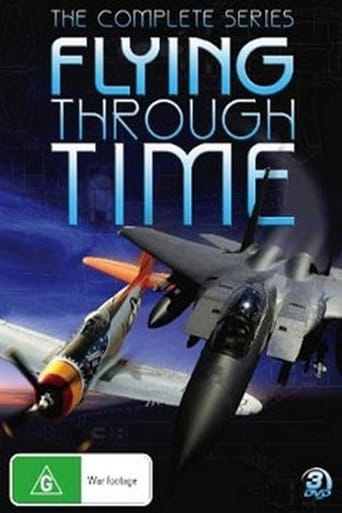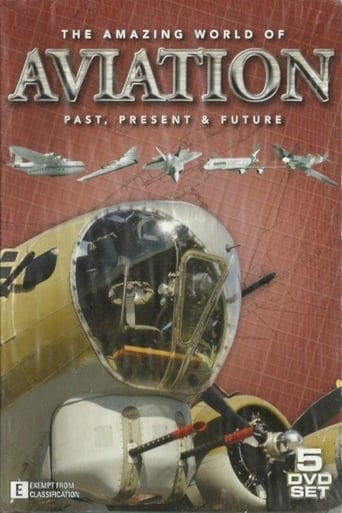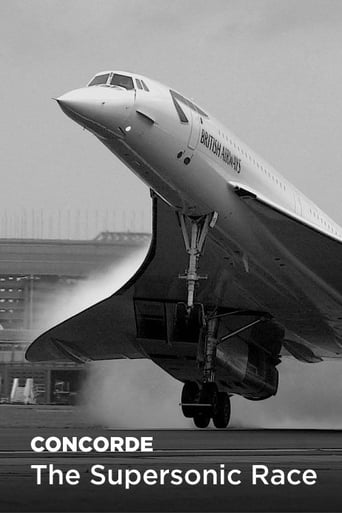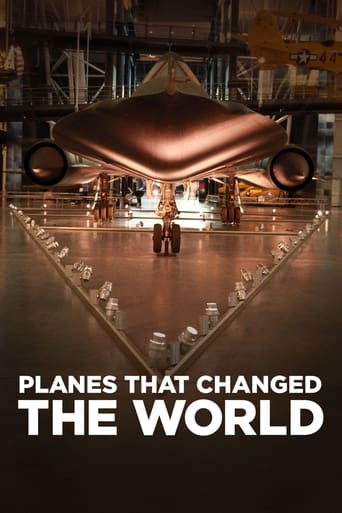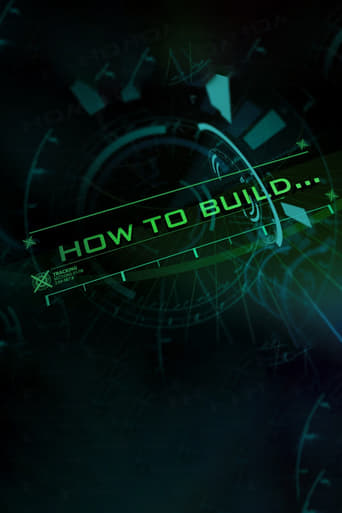Flying Through Time (2004)

Discover the excitement of flying as we reveal the most remarkable aircraft ever built and the aeronautical advancements that shaped flying history in Flying Through Time. Audiences will marvel at historic airships, be wowed by war planes and delight at luxury jetliners.
Watch NowFlying Through Time
2004 / TV-Y7

Discover the excitement of flying as we reveal the most remarkable aircraft ever built and the aeronautical advancements that shaped flying history in Flying Through Time. Audiences will marvel at historic airships, be wowed by war planes and delight at luxury jetliners.
Seasons & Episode

Aircraft carrier development started as soon as the Wright brothers took to the air. However, it wasn't until WWII that the practice of using planes off floating platforms was tested in combat conditions. In this episode we explore the early development of the Aircraft Carrier.


The Grumman F14a Tomcat is amongst today's ultimate weapons. It is considered a large fighter and stands at 63 foot long, 16 foot high and has a maximum wingspan of 64' 1". The F14 's cruise speed is approximately 610 mph and it has a maximum speed of 1544 mph or nearly mach 2 - twice the speed of sound.


Two planes that standout in the history of flight shared a number of similarities. Both had a striking appearance. Both had a throaty roar from inline 12 cylinder motors. Both rightly or wrongly were credited for winning WWII. Two of the most popular war birds from WWII are the Spitfire and the Mustang.


Developing aircraft requires huge expenditure. One company has on a number of occasions bet more than it's entire net worth. The company was Boeing and its gambles have paid off making it an aviation giant. In 1952 Boeing developed a prototype transport plane.


During the early 1960's the US Air Force, asked for tenders to build and supply a large transporter. It was believed that Boeing had the edge over its competitors, Lockheed and Douglas. However, in 1965 the Air Force announced Lockheed had won the bid with their C5-Galaxy.


The F-15 Eagle is an all-weather, extremely manoeuvrable, tactical fighter which many believe was the best in the lead up to the turn of this century. It was not developed from a line of planes previous to it. This aircraft was built from the ground up for a very specific purpose.


The Thunderbolt was the most famous of the Republic Aircraft Company's planes built during WWII. First flown on 6 May 1941, the P-47 was designed as a large, high-performance fighter/bomber. We also pay tribute to one of the worlds most greatest woman aviators and investigate the fast exciting competition of Pylon Racing.


We look at one of the many legendary planes designed by one of the worlds most awarded Aviation designers - Kelly Johnson. We follow the path of the much maligned but equally inspiring F104 Lockheed Star Fighter, from Kelly's initial concepts in 1952, through the painstaking development and to the last F104 made in 1983, a production run that lasted over 30 years.


We'll continue with the design concepts of the Lockheed company and Kelly Johnson. These designs set the company and the man so far apart from their contemporaries at that time, that to this day in one design alone that gap has still not been breached.


We look at the Vought Company and their major role in fighter development. In this episode we'll see the lineage of some of their designs including the A-7 Corsair II.


The need for an inexpensive, lightweight supersonic fighter that was easy to maintain, and capable of operating from short runways and poor quality airfields was fulfilled when this baby fighter went from the drawing board to become one of the most successful export products of the US military aircraft industry.


We look at some of the planes that set in motion a very distinguished manufacturing and aircraft design giant. One of these masterpieces was the only American fighter to remain in production throughout the entire 2nd world war, this was the P-38 Lightning.


The very first and the very last, perhaps ultimate of the US Navies propeller driven fighter aircraft, the F4U Corsair were supplied by the one company. These planes for their time represented the pinnacle of their technologies. We look at the lineage and contempories of the plane that would win the Pacific War.


After the hectic development period of world war 2 and the ensuing rush into jet engine development, a successive series of fighter aircraft emerged that made their mark in aviation history. These planes epitomised the shape of the supersonic jet fighter; they were the Century Fighters.


We look at the aircraft that became one of the most enduring American light attack aircraft of all time, the A4 Sky Hawk. This plane has been in use for over fifty years for the simple fact there is nothing else that can match all of its virtues and achieve all of its applications.


Over the years, airlines and manufactures have sought to make flight available to the masses and seat sizing and space per passenger were continually squeezed to make international travel affordable. In the short history of overseas air travel, there are perhaps only four or five planes that were built that could be considered quantum leaps in the expansion of intercontinental flight.


Flying Through Time we'll be looking at the development of the US medium attack aircraft from the pre WWII models to their developments in jet powered light bombers. These planes filled the gap between the fast incisive action of the fighter and the lumbering concentrated firepower of the heavy bombers.


In the early days of flight, most planes were flying boats. Lakes, rivers, bays and oceans provided ready made run ways. But by the time WWII started these runways were not always located where runways were needed. So a shift to made runways and planes with landing gear became the usual configuration for aircraft.


Flying through Time we'll take a flying trip through the years of the development of the American Heavy bomber. These planes were the big stick wielded by the US offensive forces, and became the tools of choice in the brinkmanship of the cold war. Today they're the platforms for launching military surgery and the embodiment of US airpower.


In the annals of aeronautic history the plane that takes the place between Republics classic attack fighters, the P47 thunderbolt of the Second World War and their outstanding F105 Thunderchief in the skies of Vietnam, is often skipped over.


Half a century after this aircraft first flew it is still in production. It has been hailed by some aviation enthusiasts as one of the most outstanding aircraft to take to the skies. Surprisingly, in this age of jets this most capable aircraft is propeller driven. Not one part of this latest version is from the original model.


In today's world the embodiment of military might is the American aircraft carrier. These monoliths personify the essence of power and technical achievement. The weapons they have carried over the years have always been at the edge of industrial and scientific achievement and many of the planes used have become icons of aeronautic history.

Discover the excitement of flying as we reveal the most remarkable aircraft ever built and the aeronautical advancements that shaped flying history in Flying Through Time. Audiences will marvel at historic airships, be wowed by war planes and delight at luxury jetliners.
Watch Trailer
Free Trial Channels


